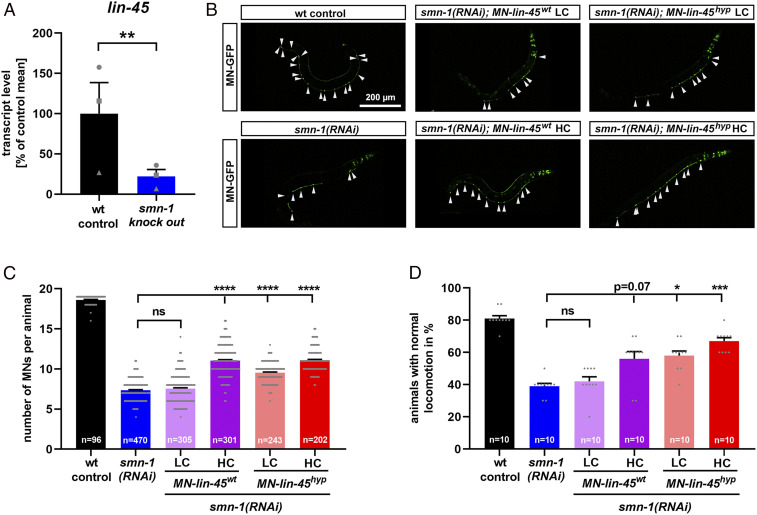Fig. 4.
A B-Raf homolog contributes to motoneuron degeneration in smn-1–deficient C. elegans. (A) Quantitative reverse transcription PCR analysis of the B-Raf homolog lin-45 expression in a C. elegans smn-1 KO mutant compared to wild type. Biological independent replicates (form of the data point) were performed in a paired experimental setup. (B) Representative images of C. elegans animals expressing GFP under the punc-25 promoter, which exclusively drives expression in motoneurons (MN-GFP): arrowheads show individual D-type motoneurons. smn-1 was silenced in D-type motoneurons only [smn-1(RNAi)]. Wild-type animals served as controls (wt control). The motoneuron promoter punc-47 drives the expression of lin-45 either as a wild type (MN-lin-45wt) or as a hyperactive mutant (MN-lin-45hyp) at LC or HC. (C) The motoneurons were identified as distinct GFP-expressing cells and quantified for each animal. (D) The backward locomotion was quantified as the percentage of animals with normal locomotion. All graphs show individual data points as scatterplots with bars and whiskers displaying mean + SEM. Kruskal–Wallis test was combined with Dunn’s multiple comparison test, with ****P ≤ 0.0001, ***P ≤ 0.001, *P ≤ 0.05 and ns (not significant) (C and D) or paired-ratio Student’s t test with **P ≤ 0.01 (A).

